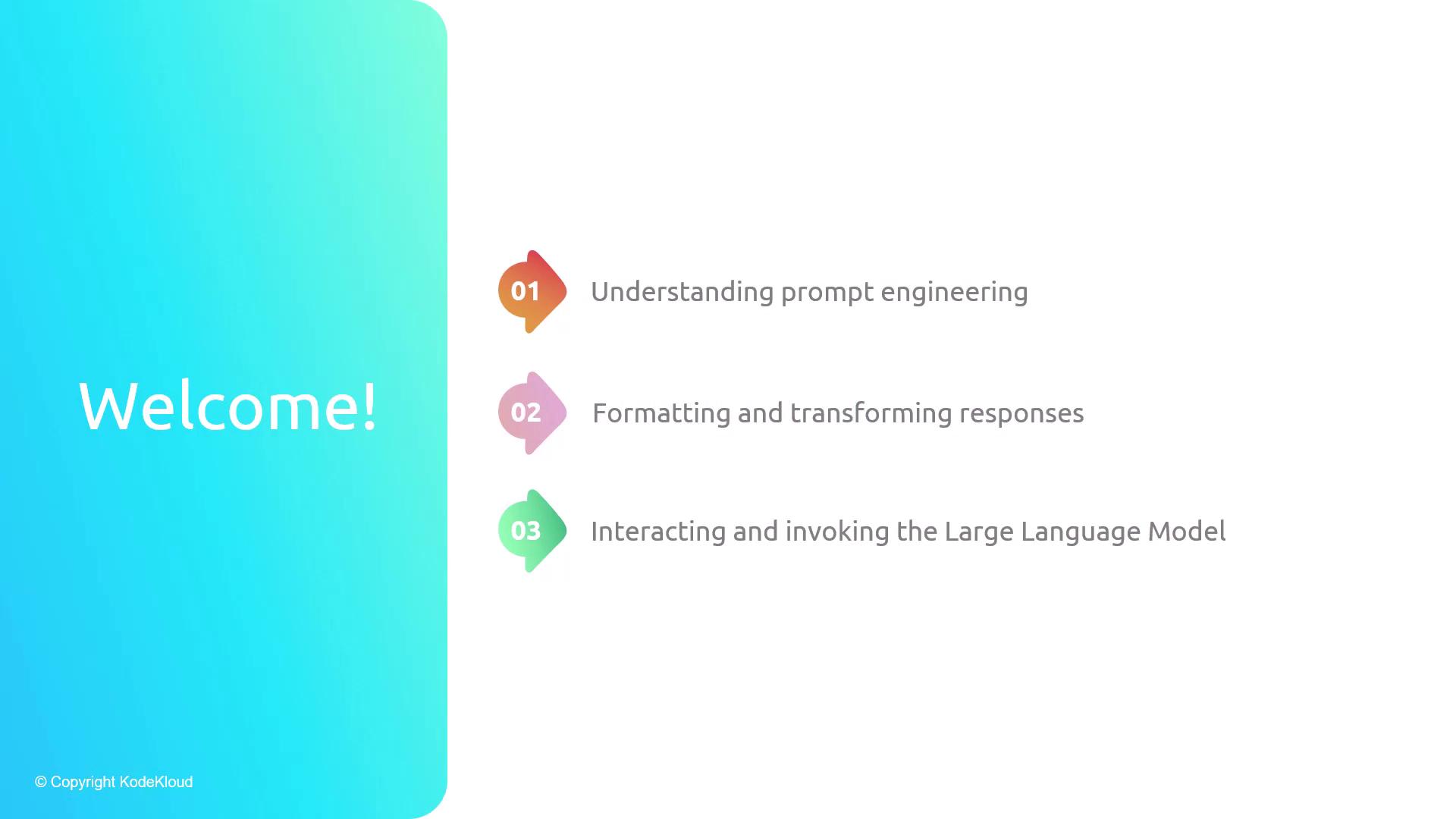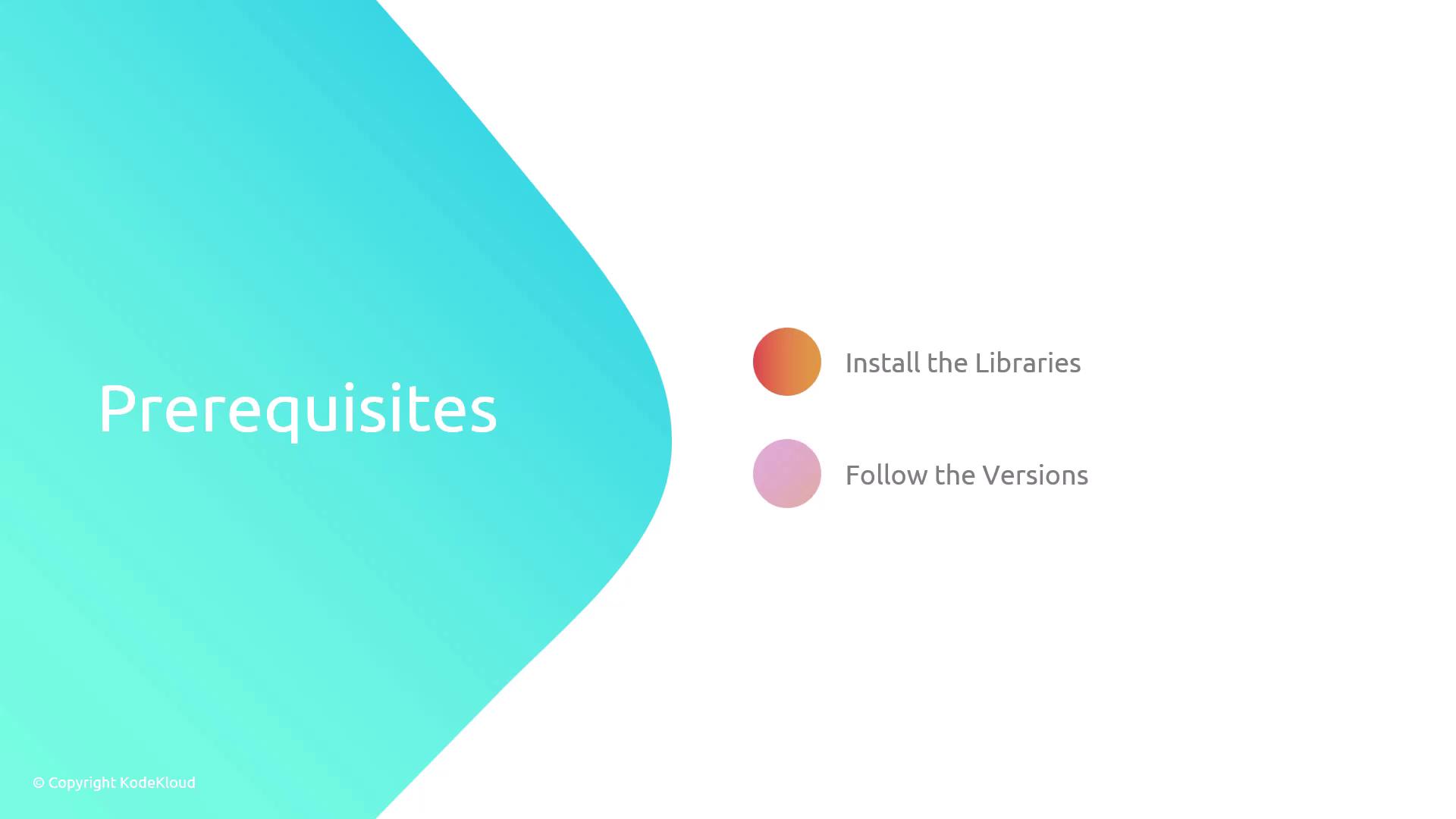LangChain
Interacting with LLMs
Setting up Environment
Welcome to this lesson on interacting with large language models using LangChain. In this module, we’ll explore the Model I/O layer—the essential bridge between your application and the LLM. By the end of this guide, you’ll be able to:
- Craft effective prompts
- Format and transform model responses
- Parse and process output programmatically

Model I/O focuses on three core capabilities:
- Prompt Invocation: Techniques for engineering prompts
- Response Formatting: Structuring outputs for downstream tasks
- Parsing & Transformation: Converting raw text into data structures
Prerequisites
Before diving in, ensure you meet the following requirements:

- Python 3.8+ installed
- An OpenAI API key stored in an environment variable
- Exact versions of dependencies to avoid compatibility issues
Warning
LangChain is under active development. Installing the specified versions ensures consistency with this tutorial.
Dependency Versions
| Package | Version | Installation Command |
|---|---|---|
| langchain | 0.1.10 | pip install langchain==0.1.10 |
| langchain_openai | 0.0.8 | pip install langchain_openai==0.0.8 |
| openai | 1.13.3 | pip install openai==1.13.3 |
Installing Dependencies
Run the following commands in your terminal:
pip install langchain==0.1.10
pip install langchain_openai==0.0.8
pip install openai==1.13.3
Configuring Your API Key
Set your OpenAI API key as an environment variable:
export OPENAI_API_KEY=YOUR_OPENAI_API_KEY
Note
If you’re using the KodeKloud labs environment, you can configure OPENAI_API_KEY directly through the labs interface. Refer to your lab’s documentation for details.
Next Steps
With your environment ready, you can now:
- Invoke the LLM via prompt engineering
- Format responses into JSON, Markdown, or custom schemas
- Parse outputs into Python objects for further processing
For more information, see:
Watch Video
Watch video content